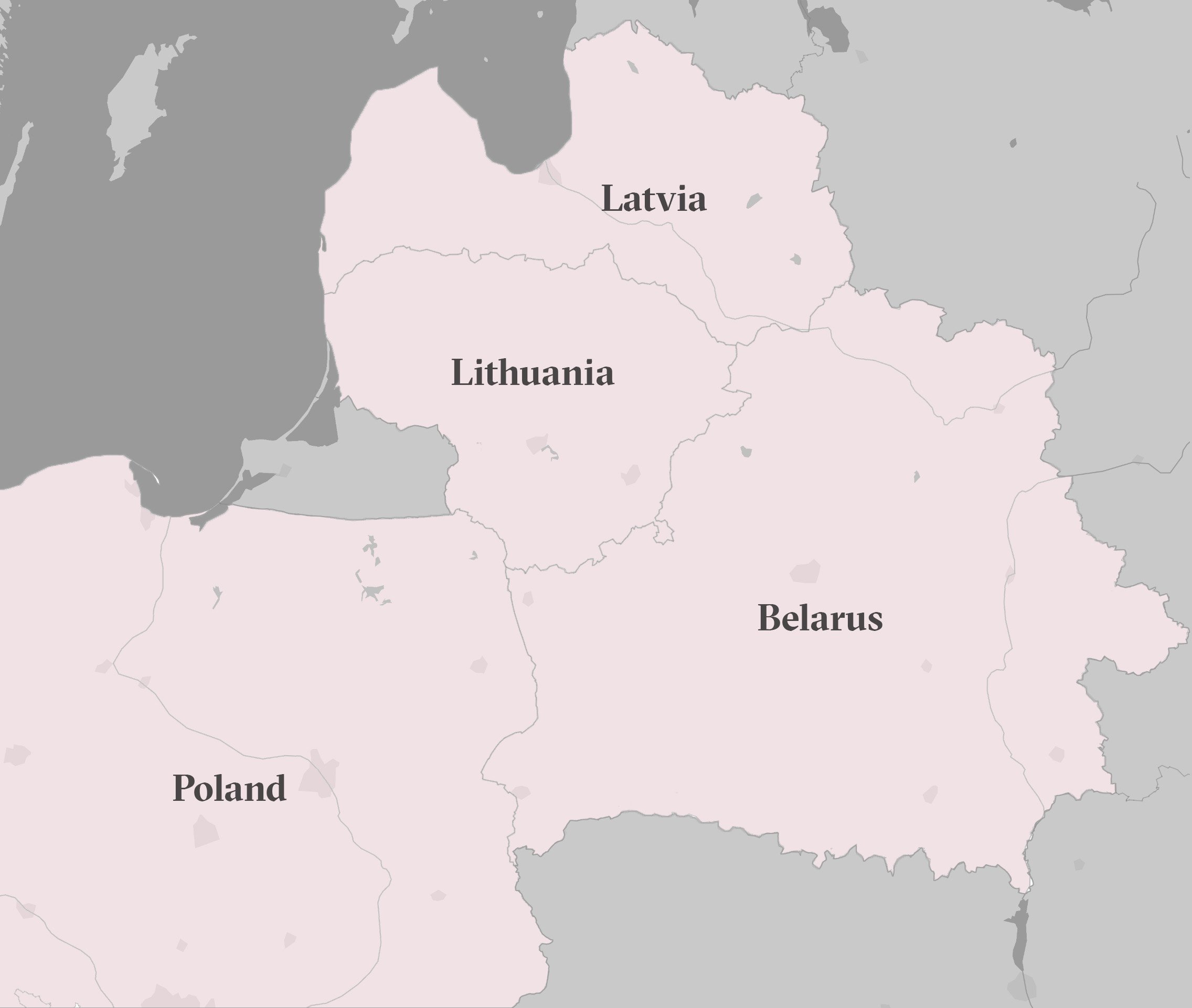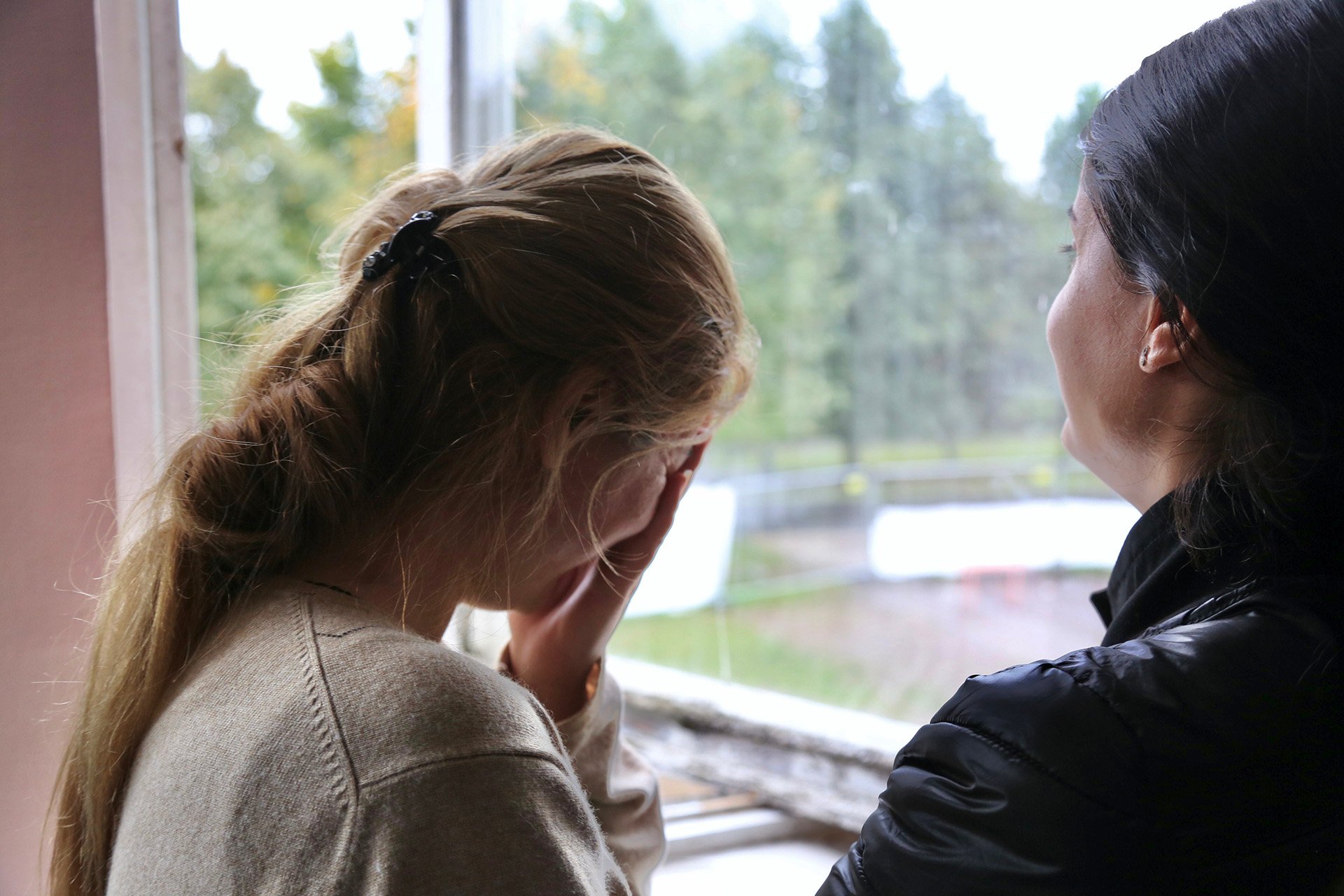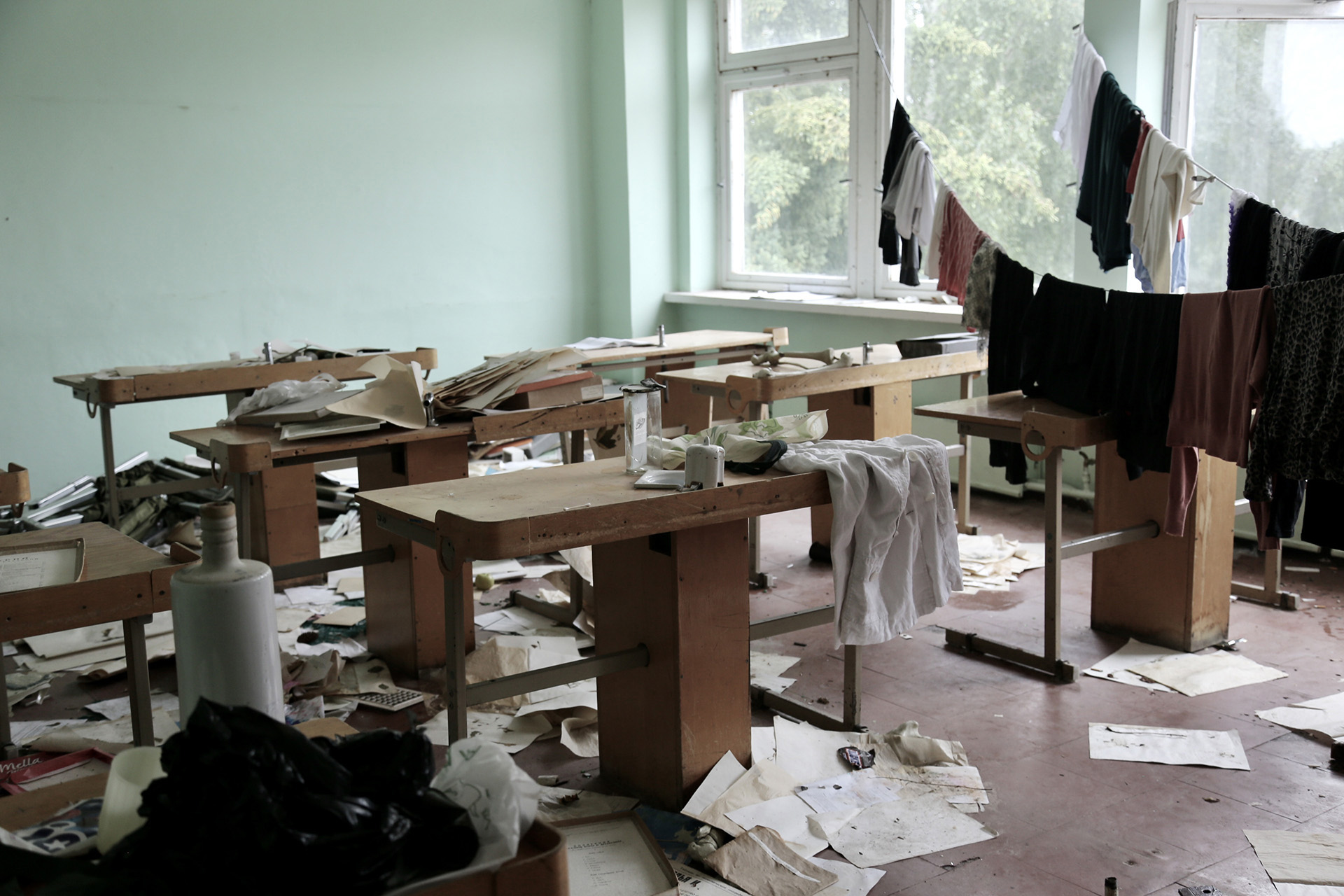For weeks, a fast-evolving showdown between the EU and Belarus has been fuelling a humanitarian crisis on Europe’s eastern border, with thousands of asylum seekers and migrants being used as pawns in a geopolitical dispute.
Tension escalated last week as somewhere between 2,000 and 4,000 asylum seekers and migrants were sleeping rough along the Poland-Belarus border in freezing temperatures. Belarusian security forces were reportedly directing them where to cross – even cutting through barbed-wire fences – and preventing those who wanted to turn back from leaving.
Meanwhile, Poland has declared a state of emergency and deployed 15,000 soldiers to the border region to prevent people from entering – leading to clashes.
In a sign that tensions may be easing, Belarus began moving asylum seekers and migrants on 17 November out of makeshift camps to temporary accommodation away from the border. The main border crossing between Belarus and Poland has now been cleared.

Belarus has also reportedly proposed a plan to return 5,000 asylum seekers and migrants to their home countries in exchange for the EU agreeing to take in 2,000 who have been stuck along the border.
Despite the seeming de-escalation, Western leaders remain sceptical that the crisis is drawing to a close.
The confrontation has been getting worse since July, when the number of asylum seekers and migrants entering EU member states Lithuania, Latvia, and Poland from neighbouring Belarus suddenly began to increase.
Overall, the number of people involved is relatively low: the EU’s border agency, Frontex, counted just over 6,500 irregular border crossings on the EU’s eastern land borders between January and the end of October this year – although an unknown number of people have likely crossed without being detected.
Still, it’s a significant increase compared to previous years: Lithuania, for example, saw just 81 people irregularly cross its border from Belarus in 2020; this year the number has jumped to more than 4,000.
The EU accuses Belarus’ authoritarian president, Alexander Lukashenko, of using irregular migration to retaliate against the EU: following a 2020 election – widely viewed to have been rigged – the Belarusian leader violently cracked down on political opposition, prompting the EU to impose sanctions. The EU issued another round of sanctions after Belarus scrambled fighter jets in May this year to force a Ryanair flight to land in the capital, Minsk, in order to arrest a dissident journalist.
Lukashenko’s attempt to leverage deep, internal EU divisions over migration policy to his political advantage – by providing would-be asylum seekers and migrants with visas to Belarus and pointing them towards the EU’s borders – is reminiscent of manufactured crises on the Greek-Turkish border in February 2020 and on the border between Spain’s North African enclave of Ceuta and Morocco in May this year.
In both cases, the EU’s neighbours sought to extract political concessions or retaliate for policies they disliked by opening their borders and allowing asylum seekers and migrants through. The EU is now referring to the tactic as a form of hybrid warfare.
The situation along the EU’s eastern borders is further complicated by broader global alliances: Poland, Lithuania, and Latvia are NATO member states, while Lukashenko is backed by Russia. The tense situation on the border has raised fears – however unlikely – that it could develop into an armed conflict that could pull in Russia and the United States.
EU leaders are already saying that Russian President Vladimir Putin has had a hand in fomenting the crisis and should play a role in resolving it. And the United States is joining the EU in imposing new sanctions to punish individuals and companies involved in facilitating the movement of people to Belarus and towards the EU’s borders.
Stuck in the middle and bearing the brunt of the political confrontation are asylum seekers and migrants from the Middle East, Afghanistan, and Africa: At least 12 people have died attempting to cross from Belarus into Poland since the furore began.
Who is migrating?
Iraqis – many from the Kurdistan region in the north – account for the majority of the people recorded by Frontex crossing the EU’s eastern border. Afghans and Syrians are the next largest nationalities, followed by people from the Congo-Brazzaville and Russia.
During two weeks in the southeast of Lithuania close to the border with Belarus in August and September, The New Humanitarian met people from the Middle East and sub-Saharan Africa who were being held in abandoned buildings that had been repurposed into makeshift camps for asylum seekers and migrants.
“We all took the same flight,” Dilbak, a 30-year-old member of the Yazidi ethnoreligious group from northern Iraq, told The New Humanitarian, gesturing towards the group of 20 other Yazidi women she was sitting with in an old school building turned camp.
The women were survivors of the Yazidi genocide, carried out by the so-called Islamic State (IS) after it took control of much of northern Iraq in 2014. Thousands of Yazidis were killed or enslaved by IS.

Dilbak and the other women had escaped by trekking across the desert to Syria. “My father passed away during the trip, and we had to bury him there in the middle of the desert,” she added.
After northern Iraq was liberated from IS in 2015, Dilbak returned but still didn’t feel safe. When Iraqi travel agencies began promoting flights to Minsk and easy access to the EU in May this year, Dilbak said she and the other Yazidi women decided to try their luck without really thinking it through or having an understanding of the broader context.
“We went to Baghdad and bought a ticket through a travel agency,” Dilbak said. “We also booked a hotel for a few nights, and then a taxi that took us to the border.”
But after crossing the border, they were sent to the camp, where they had already been for two months at the time of The New Humanitarian’s visit. They have since been relocated to another camp close to the border with Belarus.
Many of the Iraqis who have attempted to reach the EU from Belarus are from the Kurdish ethnic group that makes up the majority of the population in the north of the country. Along with people of other nationalities taking the route, many saw it as an easier and less dangerous way to reach Europe than routes through Turkey or Libya.
What is the humanitarian situation?
Until Belarus started clearing the camps near the border, hundreds – if not thousands – of people had been sleeping in flimsy tents with little access to food or water. Temperatures were freezing, and the makeshift camps were crowded and the air choked with smoke from heating and cooking fires.
The clearing of the camps sparked fears among asylum seekers and migrants that they may soon be deported from Belarus. Some had been stuck on the border for up to several weeks, attempting to cross and repeatedly being pushed back by Polish security forces.
On 16 November, frustrated, desperate, and reportedly egged on by Belarusian security forces, hundreds tried to rush a Polish border checkpoint and were met with water cannon and tear gas. Asylum seekers and migrants threw stones and debris, and a Polish police spokesperson said that Belarusian security forces had given smoke grenades to some of those trying to cross.

A state of emergency declared in September by Poland bars journalists and aid organisations from coming within three kilometres of the border. As a result, the job of providing humanitarian assistance on the Polish side has largely fallen to local volunteers, who are reportedly overwhelmed by the scale of the needs.
The EU has allocated 700,000 euros to be sent to the International Federation of Red Cross and Red Crescent Societies (IFRC) and the Belarusian Red Cross to provide humanitarian assistance to asylum seekers and migrants in Belarus.
Lithuania also declared a state of emergency on 9 November along its border with Belarus and in shelters for migrants and asylum seekers throughout the country. The number of people attempting to enter Lithuania has dropped off since early August, but the government cited the situation on the Poland-Belarus border when declaring the measure.
The state of emergency restricts the rights of people in shelters to communicate in writing or over the phone and allows security forces to use “proportional physical violence” to prevent asylum seekers and migrants from entering the country.
Since The New Humanitarian visited, asylum seekers and migrants in Lithuania have been moved to better accommodation, according to the Lithuanian Red Cross. “Currently, 93 percent of migrants live in heated buildings or modular houses... so we believe that at least adequate living conditions will be provided for the coming frosts and winter,” said Monika Alimienė, director of communications at the Lithuanian Red Cross.
What impact is this having on access to asylum?
Poland, Lithuania, and Latvia have all taken a hard line to try to keep asylum seekers and migrants out – including by pushing them back into Belarus without allowing them to apply for asylum – according to rights groups.
Pushbacks are illegal under international and EU law, but Poland passed domestic legislation last month legalising the practice, which is condoned under Lithuania’s state of emergency.
Belarus’ EU neighbours are also quickly fortifying their borders with fences and plans to build walls to keep would-be asylum seekers and migrants out. Twelve EU states are calling on the bloc’s executive body, the EU Commission, to begin funding border walls – something it has been loath to do because of the history of walls on the continent.
After the uptick first began in July, the Lithuanian government amended the country’s asylum law. The changes have limited access to asylum procedures and made it easier for people to be held in detention, according to the European Council on Refugees and Exiles (ECRE), a network of refugee rights NGOs.
Out of 2,600 people whose asylum cases were heard through 1 November, only six have been granted protection, according to the Lithuanian Ministry of Interior’s Immigration Department.
“This does not mean we will never grant asylum. We just have not found many true refugees yet,” Evelina Gudzinskaitė, head of the Immigration department, told The New Humanitarian.
Employees of the country’s asylum service, however, told local media they were under pressure to conduct shoddy asylum interviews and coerce people into “voluntarily” returning to their countries. Asylum seekers and migrants The New Humanitarian spoke to in Lithuania confirmed the pressure.
“We got offered 300 euros if we accept to go back home,” Nicolas, an 18-year-old from Cameroon, told The New Humanitarian. “What can we do with 300 euros if we are going to get killed once we get back home?”
The migrants and asylum seekers interviewed for this article preferred to only use their first names for security reasons.






